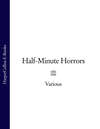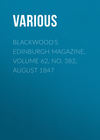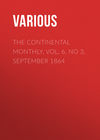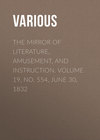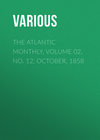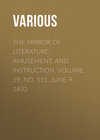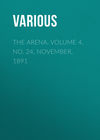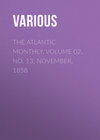Loe raamatut: «The Mirror of Literature, Amusement, and Instruction. Volume 10, No. 285, December 1, 1827», lehekülg 6
FINE ARTS
HOGARTH'S MARRIAGE-A-LA-MODE
Hogarth's admirable series of pictures, entitled Marriage-à-la-mode, were at first slightly treated by the public, at which the artist was greatly incensed. Being in want of money, he was at length obliged to dispose of them to Mr. Lane, of Hillington, for one hundred and twenty guineas. The pictures being in good frames, which cost Hogarth four guineas a piece, his remuneration for painting this valuable series was but a few shillings more than one hundred pounds. On the demise of Mr. Lane, they became the property of his nephew, Colonel Cawthorn, who very highly valued them. In the year 1797 they were sold by auction, at Christie's, Pall Mall, for the sum of one thousand guineas; the liberal purchaser being the late Mr. Angerstein. They now belong to government, and are the most attractive objects in the National Gallery.
HAMPTON COURT PALACE
The gardens and park, which are three miles in circumference, appear to me to be above all competition. As you enter, you are struck with the majestic beauty of the trees, and the fine gravel walks. As you advance, the fountains and statues demand your admiration; particularly the famous Gladiator, which was brought from Rome. While in the gardens, the statues of Flora, Ceres, Pomona, and Diana, placed on the west front of the building, are seen to much advantage.
The magnificent palace was originally built by Cardinal Wolsey, and consists of three principal quadrangles. Here Cromwell resided, and it was the favourite residence of William and Mary. It is chiefly built of brick, and is very capacious, more so than any other royal palace in the British empire. Arriving at the great entrance, you almost seem as if you were about to enter a fairy castle. The floor of the hall is laid out in beautiful square slabs of marble, and a staircase of the same material leads you to the upper apartments, which contain pictures and numerous curiosities.
Among the fine paintings, I shall notice a few, which appear to me as being perfect master-pieces. But I must first take the liberty of saying a word or two about the gentleman who conducts you through the rooms to explain the several pictures. When I had the pleasure of being with him, his hair was powdered, and he carried a silver-headed cane. He hurried me through the rooms, filling my ears with such gibberish as this:—"That ere picture, sir, up there, was painted, five hundred years ago, for William the Conqueror, by Wandyke."4 This is no mean blunder in chronology!
There is a fine portrait of William the Third on horseback, of the size of life, by Sir Godfrey Kneller; the horse is painted in a side view, and has a good effect. There are eight fine female portraits of distinguished personages, by the same hand, in the highest state of preservation.
Bandinella, the Sculptor, by Corregio, is a most beautiful portrait. The face of the sculptor is full of vivid expression, and the gold chain about his neck is almost a deception. This painting, and a Holy Family, are all we find of the great Corregio at Hampton Court.
Charles the First, on horseback, by Sir A. Vandyke, is certainly much superior to the portrait of William, mentioned above. As a painter, Sir Godfrey cannot be ranked with Vandyke, though, I believe, the former considered himself much higher in the arts than the latter. The picture before us is an admirable specimen of Vandyke's powers.
George the Third, likewise on horseback, reviewing his troops on Hounslow Heath, by Sir William Beechey, R.A. This picture is unquestionably one of Sir William's best productions, and does honour to the fine arts of this country. With the above portraits, there are others by West, &c., which possess considerable merit.
There are, also, several choice specimens of Titian, Holbein, and Domenichino; with a few cabinet pictures in the Dutch school, by Teniers, Ostade, &c. In this palace are Raphael's celebrated cartoons, which are too well known to need describing in this place. G.W.N.
THE SELECTOR; AND LITERARY NOTICES OF NEW WORKS
A BALLAD SINGER
A Ballad-Singer is a town-crier for the advertising of lost tunes. Hunger hath made him a wind-instrument; his want is vocal, and not he. His voice had gone a-begging before he took it up, and applied it to the same trade; it was too strong to hawk mackerel, but was just soft enough for "Robin Adair." His business is to make popular songs unpopular,—he gives the air, like a weather-cock, with many variations. As for a key, he has but one—a latch-key—for all manner of tunes; and as they are to pass current amongst the lower sorts of people, he makes his notes like a country banker's, as thick as he can. His tones have a copper sound, for he sounds for copper; and for the musical divisions he hath no regard, but sings on, like a kettle, without taking any heed of the bars. Before beginning he clears his pipe with gin; and is always hoarse from the thorough draft in his throat. He hath but one shake, and that is in winter. His voice sounds flat, from flatulence; and he fetches breath, like a drowning kitten, whenever he can. Notwithstanding all this, his music gains ground, for it walks with him from end to end of the street. He is your only performer that requires not many entreaties for a song; for he will chant, without asking, to a street cur, or a parish post. His only backwardness is to a stave after dinner, seeing that he never dines; for he sings for bread, and though corn has ears, sings very commonly in vain. As for his country, he is an Englishman, that by his birthright may sing whether he can or not. To conclude, he is reckoned passable in the city, but is not so good off the stones.—Whims and Oddities. Second series.
VOYAGE UP THE MISSISSIPPI
On leaving New Orleans, in ascending the river, the country, still the same continuous flat, is enriched and enlivened by a succession of pretty houses and plantations, with each a small negro town near them, as well as the sugar-houses, gardens, and summer-houses, which give the idea of wealth and industry. For sixty miles the banks present the appearance of one continued village skirted with plantations of cotton, sugar-cane, and rice, for about two miles from the river, bounded in the rear, by the uncultivated swamps and woods. The boat proceeds continually near the shore on one side or the other, and attracts the inhabitants to the front of their neat houses, placed amidst orange groves, and shaded with vines and beautiful evergreens. I was surprised to see the swarms of children of all colours that issued from these abodes. In infancy, the progeny of the slave, and that of his master, seem to know no distinction; they mix in their sports, and appear as fond of each other as the brothers and sisters of one family; but in activity, life, joy, and animal spirits, the little negro, unconscious of his future situation seems to me to enjoy more pleasure in this period of existence, than his pale companions. The sultry climate of Louisiana, perhaps, is more congenial to the African constitution, than to that of the European.
The next morning we arrived at Baton Rouge, 127 miles on our journey; a pretty little town, on the east side, and the first rising ground we had seen, being delightfully situated on a gradual acclivity, from which is a fine view of the surrounding flats. The fine barracks close to it, contain a few companies of troops. We here stopped to take in some ladies, who continued with us till the end of the voyage. To this place the leveé, or artificial banks, are continued on both sides of the river from New Orleans, without which the land would be continually overflowed. From this to Natches (232 miles,) the country is not interesting, consisting principally of dense forest and wilderness, impenetrable to the eye, diversified, however, by the various water fowl which the passing vessels disturb, in their otherwise solitary haunts, and by the number of black and grey squirrels leaping from branch to branch in the trees. The great blue kingfisher, which is common here, is so tame, as scarcely to move, as the boat passes, and we frequently saw, and passed close to large alligators, which generally appeared to be asleep, stretched on the half-floating logs. Several were fired at from the vessel, but none procured. One pair that I saw together, must have been each upwards of twelve feet long.
Natches is a pleasantly situated town, or rather a steep hill, about half a mile from the landing place, where are many stores and public houses. The boat remained here an hour, and we ascended to the upper town, a considerable place, with a town-house, and several good streets and well-furnished shops, in which we purchased some books. This place exports much cotton, and the planters are said to be rich. It commands a fine prospect over the river and surrounding country. It has been tried as a summer residence by some of the inhabitants of New Orleans, but the scourges of this part of America (fever and ague) extend their ravages for more than 1000 miles higher up. A partial elevation of ground, in an unhealthy district, has been proved to be more pernicious, than even the level itself. From hence, to the junction of the Ohio, there is little to interest the stranger, excepting the diversity of wood and water. The ground rises in some places, though with little variety, till you pass the junction of the Ohio, 1253 miles from the sea. Shortly after entering the Ohio, the country begins to improve; you perceive the ground beginning to rise in the distance, and the bank occasionally to rear into small hills, which show their strata of stone, and rise into bluffs, projecting into the bends of the river, shutting it in, so as to produce the effect of sailing on a succession of the finest lakes, through magnificent woods, which momentarily changed their form, from the rapid motion of our boat. It was now full moon, and these scenes viewed during the clear nights, were indescribably beautiful.—Bullock's Journey to New York.











